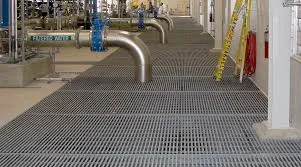
-
 Afrikaans
Afrikaans -
 Albanian
Albanian -
 Amharic
Amharic -
 Arabic
Arabic -
 Armenian
Armenian -
 Azerbaijani
Azerbaijani -
 Basque
Basque -
 Belarusian
Belarusian -
 Bengali
Bengali -
 Bosnian
Bosnian -
 Bulgarian
Bulgarian -
 Catalan
Catalan -
 Cebuano
Cebuano -
 China
China -
 China (Taiwan)
China (Taiwan) -
 Corsican
Corsican -
 Croatian
Croatian -
 Czech
Czech -
 Danish
Danish -
 Dutch
Dutch -
 English
English -
 Esperanto
Esperanto -
 Estonian
Estonian -
 Finnish
Finnish -
 French
French -
 Frisian
Frisian -
 Galician
Galician -
 Georgian
Georgian -
 German
German -
 Greek
Greek -
 Gujarati
Gujarati -
 Haitian Creole
Haitian Creole -
 hausa
hausa -
 hawaiian
hawaiian -
 Hebrew
Hebrew -
 Hindi
Hindi -
 Miao
Miao -
 Hungarian
Hungarian -
 Icelandic
Icelandic -
 igbo
igbo -
 Indonesian
Indonesian -
 irish
irish -
 Italian
Italian -
 Japanese
Japanese -
 Javanese
Javanese -
 Kannada
Kannada -
 kazakh
kazakh -
 Khmer
Khmer -
 Rwandese
Rwandese -
 Korean
Korean -
 Kurdish
Kurdish -
 Kyrgyz
Kyrgyz -
 Lao
Lao -
 Latin
Latin -
 Latvian
Latvian -
 Lithuanian
Lithuanian -
 Luxembourgish
Luxembourgish -
 Macedonian
Macedonian -
 Malgashi
Malgashi -
 Malay
Malay -
 Malayalam
Malayalam -
 Maltese
Maltese -
 Maori
Maori -
 Marathi
Marathi -
 Mongolian
Mongolian -
 Myanmar
Myanmar -
 Nepali
Nepali -
 Norwegian
Norwegian -
 Norwegian
Norwegian -
 Occitan
Occitan -
 Pashto
Pashto -
 Persian
Persian -
 Polish
Polish -
 Portuguese
Portuguese -
 Punjabi
Punjabi -
 Romanian
Romanian -
 Russian
Russian -
 Samoan
Samoan -
 Scottish Gaelic
Scottish Gaelic -
 Serbian
Serbian -
 Sesotho
Sesotho -
 Shona
Shona -
 Sindhi
Sindhi -
 Sinhala
Sinhala -
 Slovak
Slovak -
 Slovenian
Slovenian -
 Somali
Somali -
 Spanish
Spanish -
 Sundanese
Sundanese -
 Swahili
Swahili -
 Swedish
Swedish -
 Tagalog
Tagalog -
 Tajik
Tajik -
 Tamil
Tamil -
 Tatar
Tatar -
 Telugu
Telugu -
 Thai
Thai -
 Turkish
Turkish -
 Turkmen
Turkmen -
 Ukrainian
Ukrainian -
 Urdu
Urdu -
 Uighur
Uighur -
 Uzbek
Uzbek -
 Vietnamese
Vietnamese -
 Welsh
Welsh -
 Bantu
Bantu -
 Yiddish
Yiddish -
 Yoruba
Yoruba -
 Zulu
Zulu
Durable Fiberglass Hoods for Enhanced Vehicle Performance and Protection
The Rise of Fiberglass Hoods in Automotive Customization
In the automotive world, customization is a fundamental aspect of car culture, allowing enthusiasts to personalize their vehicles for both performance and aesthetic appeal. One of the most innovative trends in automotive modification is the use of fiberglass hoods. This lightweight and durable material has gained popularity among car aficionados for various reasons, including performance enhancement, aesthetic versatility, and ease of installation.
What is Fiberglass?
Fiberglass is a composite material made from fine glass fibers and resin. It is known for its lightweight characteristics and exceptional strength, making it an ideal alternative to traditional metal hoods. Automakers have employed fiberglass for decades in various applications, but the trend has surged in the world of custom car builds. Fiberglass hoods are particularly popular in performance vehicles and racing cars due to their ability to reduce overall vehicle weight.
Performance Advantages
One of the primary reasons car enthusiasts opt for fiberglass hoods is the significant weight reduction compared to standard steel or aluminum hoods. A standard metal hood can weigh upwards of 30-50 pounds, while a fiberglass hood often weighs around 15-25 pounds. This reduction in weight leads to improved handling and acceleration, making it especially appealing to those who participate in motorsports.
Moreover, the decrease in weight can contribute to better fuel efficiency, making fiberglass hoods a practical choice for everyday drivers looking to enhance their vehicle's performance without compromising on functionality
.Aesthetic Appeal
fiberglass hood

Aside from performance benefits, fiberglass hoods offer a unique opportunity for personalization. The material can be molded into a variety of shapes and designs, allowing for aggressive styling and aerodynamic enhancements that factory hoods simply cannot match. Many customizers choose hoods with vents, scoops, or intricate designs that not only improve airflow but also provide a striking visual impact.
Additionally, fiberglass hoods can be easily painted or wrapped to match the vehicle's color scheme or to create a standout look. The versatility of fiberglass allows for endless customization options, catering to individual preferences and unique styles.
Installation and Maintenance
Another advantage of fiberglass hoods is their relatively straightforward installation process. Many aftermarket fiberglass hoods are designed to be direct replacements for stock hoods, meaning that the installation usually requires minimal modifications and can often be completed in a garage setting. This accessibility appeals to DIY enthusiasts who enjoy hands-on projects.
However, potential buyers should be aware that fiberglass can require more maintenance than metal hoods, particularly regarding weather resistance and UV exposure. It is essential to regularly inspect and care for fiberglass components to ensure they remain in optimal condition. Proper sealing and painting can enhance durability and longevity, protecting the hood from environmental damage.
Conclusion
In conclusion, fiberglass hoods represent a burgeoning trend in the automotive customization landscape. With their impressive weight savings, aesthetic flexibility, and ease of installation, they cater to the desires of performance-oriented car enthusiasts and those wanting to personalize their vehicles. As the automotive industry continues to evolve, fiberglass hoods are likely to maintain their popularity, driven by innovation and the passion of car lovers around the world. Whether on the street or the racetrack, fiberglass hoods embody the spirit of customization that defines car culture.









